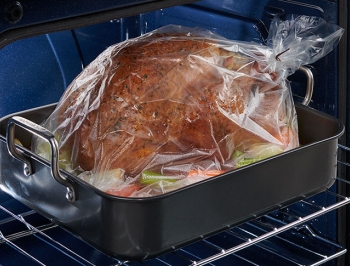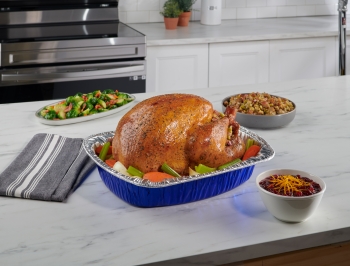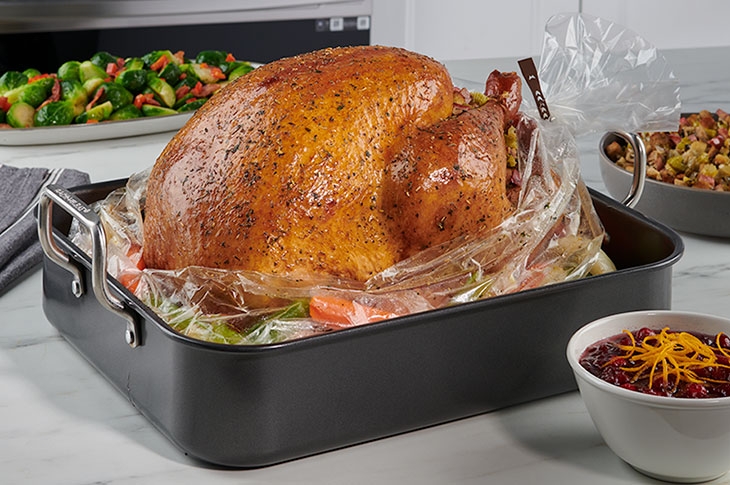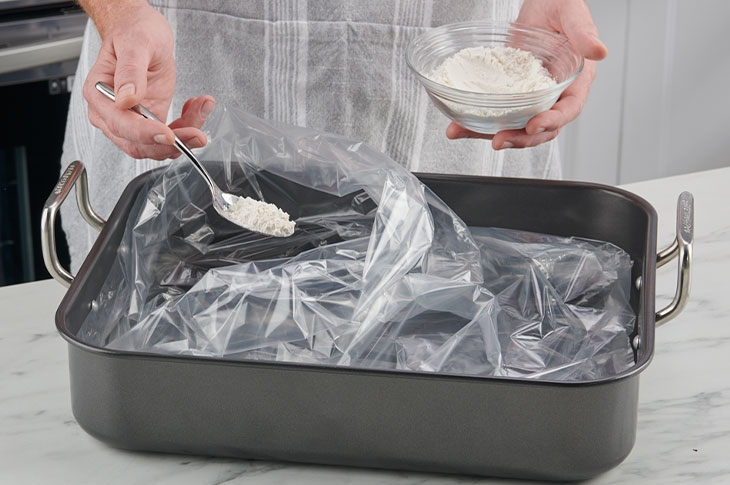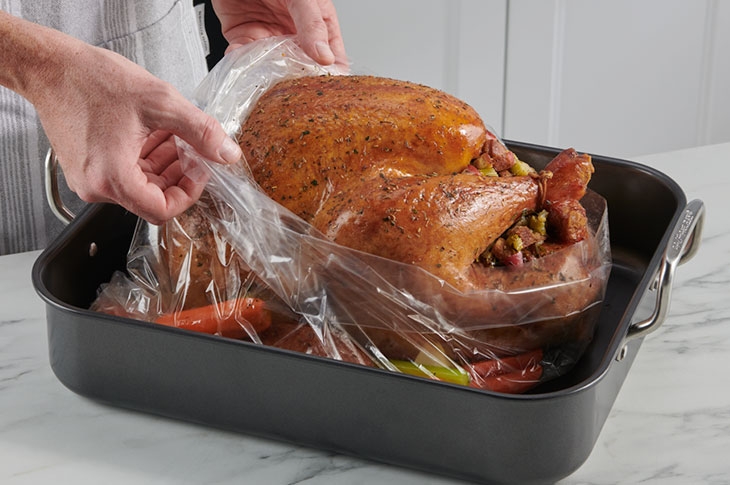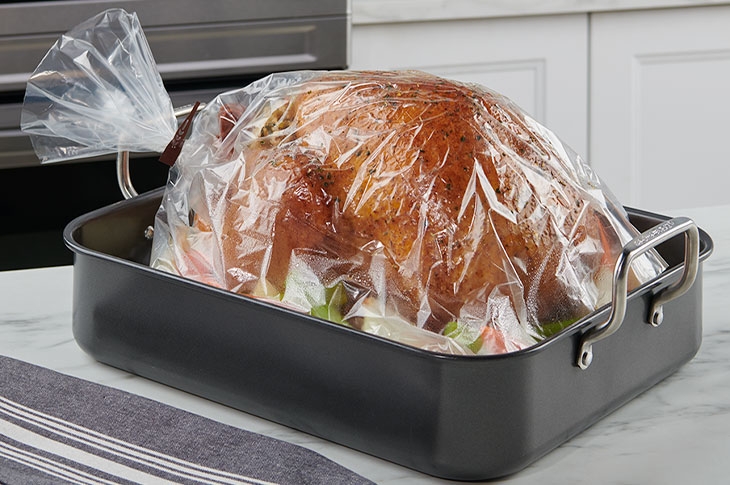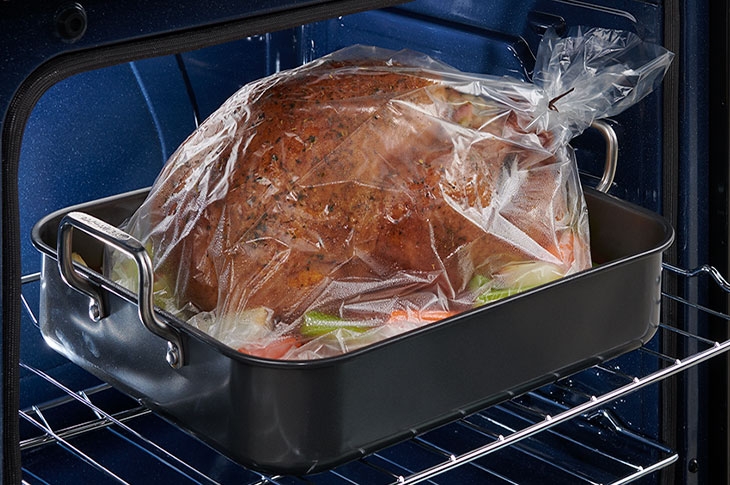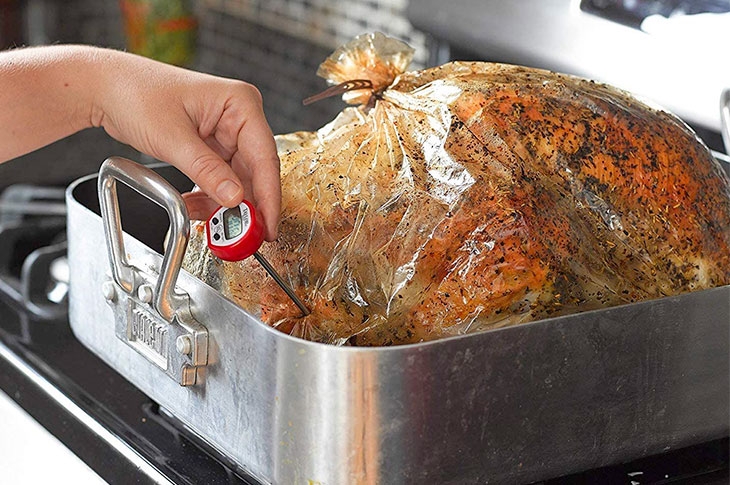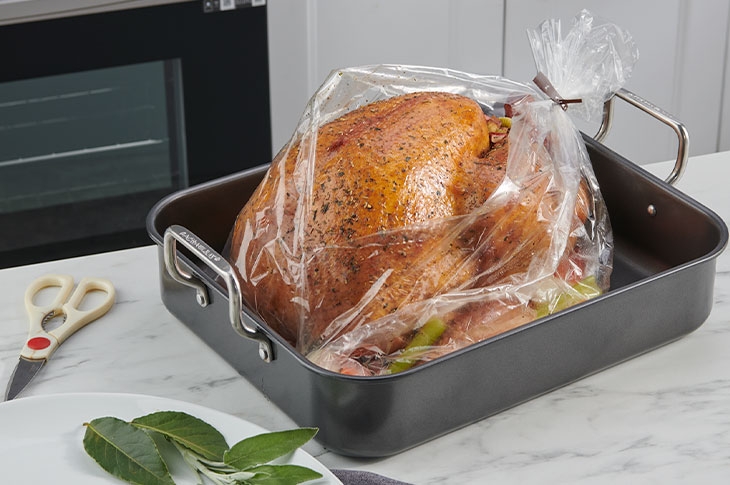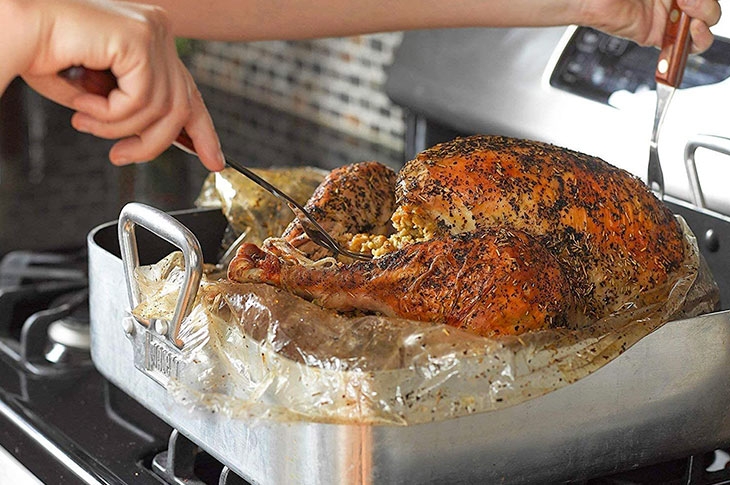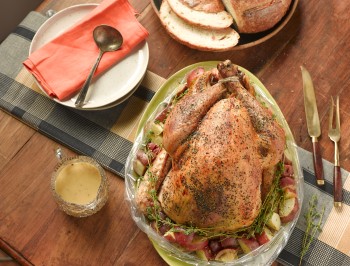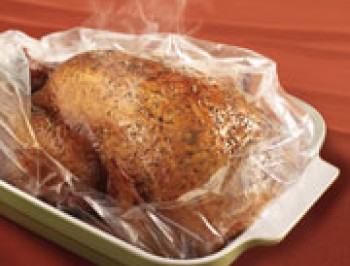How to Cook a Turkey in an Oven Bag
Whether it’s your first go at cooking Thanksgiving dinner or you’re a seasoned pro, the turkey takes center stage on the table, so it must come out perfect!
Last updated: October 9, 2024
COOKING A TURKEY IN AN OVEN BAG
Cooking your Thanksgiving turkey in a Reynolds Kitchens® Turkey Oven Bag is a fantastic way to ensure that your turkey stays moist and succulent while also turning out a golden light brown. Plus, with an oven bag, you won't even have to worry about scrubbing the roasting pan. Just follow these easy steps to roast a turkey in an oven bag for your next dinner.
YOU’LL NEED…
- Reynolds Kitchens® Turkey Oven Bag
- One 8 to 24-pound turkey
- 1 tablespoon flour (wheat, rice, potato, nut or gluten-free flour, corn starch, corn meal, or matzo meal can be used as a substitute for flour)
- Ties that come in the oven bag package
- Large oven-safe roasting pan or disposable aluminum roasting pan
- Seasonings
- Meat thermometer
YOU’LL NEED…
Oven Bags
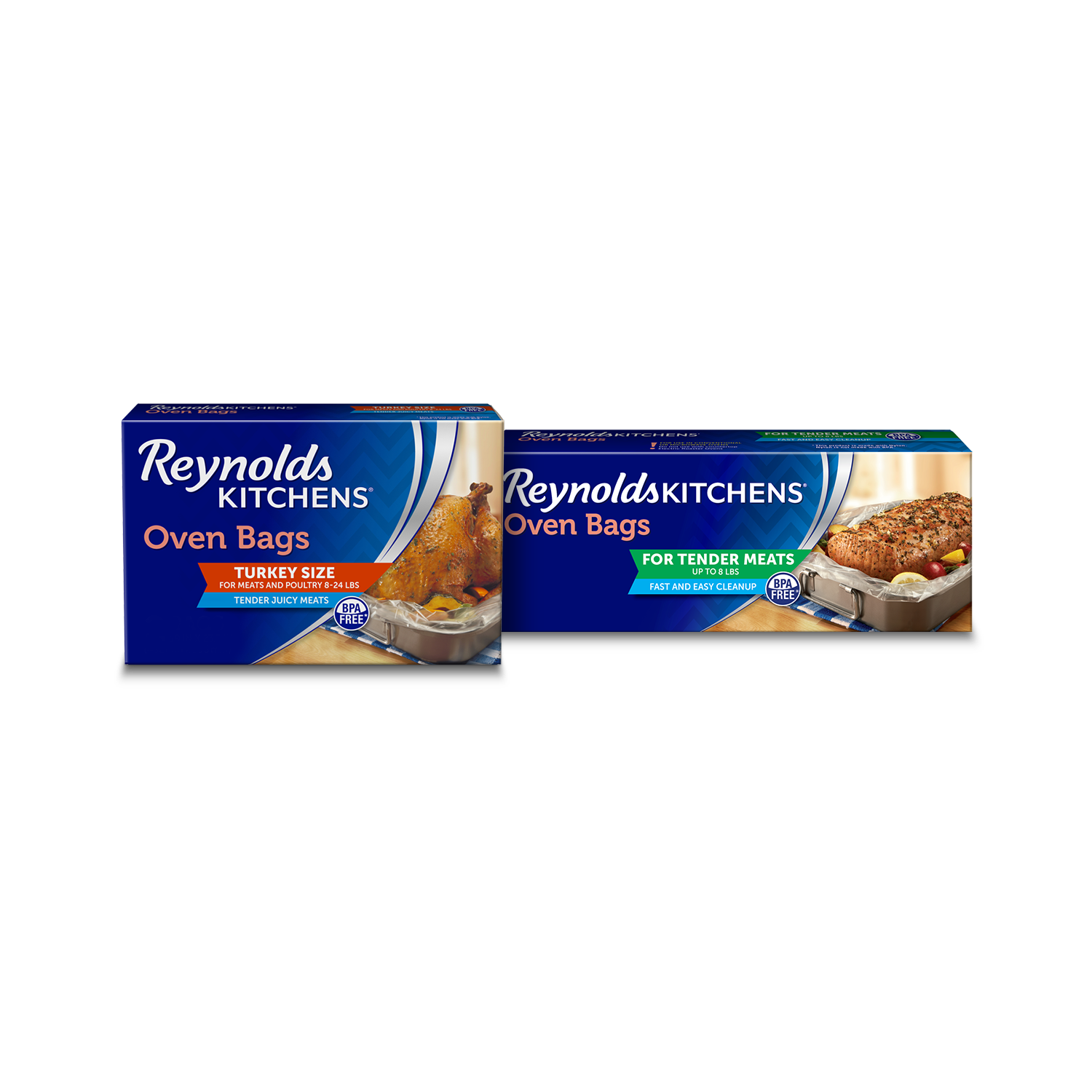
TURKEY OVEN BAG COOKING TIMES
Add 1 tablespoon of flour to coat the bag when preparing your turkey oven bag. Do not add any water (unless directed).
| OVEN BAG TURKEY COOKING TIMES Until internal temp reaches 165°F in the breast and thigh in several places, not touching the bone (If you prefer a well-done turkey with no pink juices, cook until 180°F in the thickest part of the thigh, not touching the bone) | |
| Turkey Weight | Cooking Time @ 350°F |
| Whole Turkey, unstuffed | |
| 10-12 pounds | 1 1/2 to 2 hours |
| 12-16 pounds | 2 to 2 1/4 hours |
| 16-20 pounds | 2 1/4 to 2 1/2 hours |
| 20-24 pounds | 2 1/2 to 3 hours |
| Whole Turkey, stuffed (stuffing temperature should be 165°F) | |
| 10-12 pounds | 2 to 2 1/2 hours |
| 12-16 pounds | 2 1/2 to 2 3/4 hours |
| 16-20 pounds | 2 3/4 to 3 hours |
| 20-24 pounds | 3 to 3 1/2 hours |
| Turkey Breast, bone-in | |
| 8-12 pounds | 1 3/4 to 2 1/4 hours |
| Turkey Breast, boneless | |
| 8-12 pounds | 2 1/2 to 3 hours |
| Wild Turkey | |
| Same as whole turkey, but if skinless, add 1/4 cup water and brush with extra oil or butter. | |
If you want all the juicy details about how to cook a turkey in an oven bag, and our oven bag cooking times, peek at our oven bag cooking charts for turkey, chicken, beef, pork, and more!
OVEN BAG TURKEY FAQS
What Are the Pros and Cons of Cooking a Turkey in a Bag?
If you’re aiming for an easy method to cook an extra juicy, tasty turkey with plenty of flavorful juices for gravy, oven bags are the best method. However, if you prefer crispy, roasted brown skin, you’ll want to skip the oven bag and try using one of our other methods on how to cook a Thanksgiving turkey. Explore the pros and cons of using oven bags vs. foil turkey cooking methods and more.
Can You Brine a Turkey in an Oven Bag?
Will I Have Enough Juice for Gravy When Using an Oven Bag?
What Substitute Can Be Used for Flour in Oven Bags?
Can I Cook Two Small Turkeys at One Time?
Can Two Turkey Breasts Be Placed in One Oven Bag?
Can Two Oven Bags Be Used in the Oven at Once?
Can I Cook a Turkey With the Breast Facing Down?
How Do I Cook a Turducken in an Oven Bag?
OVEN BAG TURKEY TIME AND TEMPERATURE FAQS
Does a Turkey Cook Faster in a Bag?
Yes. Larger turkeys sixteen pounds and up that are fully thawed and cooked in an oven bag can cook up to one hour faster than the turkey package directions. See the oven bag cooking chart for estimated times.
What Temperature Do You Cook a Turkey in a Reynolds Oven Bag?
A temperature of 350°F is necessary for the turkey to cook quickly and brown evenly in the oven bag. See the oven bag cooking chart for estimated times.
Will the Turkey Brown in the Oven Bag?
What is the Ideal Internal Temperature of Turkey?
The USDA states that poultry is safe to eat when cooked to 165°F and checked with a meat thermometer in several places, not touching the bone. If you prefer well-done poultry with no pink juices, cook it until the thigh (not touching the bone) reaches an internal temperature of 180°F.
What is the Max Temperature for Oven Bags?
What is the Minimum Temperature to Cook Turkey in an Oven Bag?
For food safety reasons, turkey should not be cooked at an oven temperature lower than 325°F. Cooking overnight or all day is not recommended. According to the USDA, for food safety reasons, never partially cook a turkey and finish cooking it later.
How Long Does It Take to Cook a Turkey in an Oven Bag?
Cooking time varies based on the size of your turkey. Please refer to our oven bag cooking times chart.
Can the Turkey Be Prepared the Night Before, Placed in the Oven Bag, and Stored in the Refrigerator?
Can I Open the Oven Bag Toward the End of the Cooking Time to Brown the Turkey? What Would Happen if I Did?
RELATED TIPS
